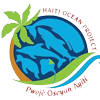First tagged shark in the history of Haiti !
OceanX, Florida International University (FIU), New England Aquarium, University of North Florida, Microwave Telemetry, and Haiti Ocean Project embarked on a research and media mission June 30 – July 17 2019 to study highly migratory oceanic whitetip sharks (OWTs) in the Bahamas and Haiti. Oceanic whitetips are critically endangered; one of the last places to find them in the world in any appreciable numbers is in the Bahamas Shark Sanctuary. The Bahamas is a pocket for one of the last moderately abundant populations of OWTs, which are experiencing decline due to overfishing around the world. This species is an iconic pelagic shark species with a storied history and photogenic presence. Lawmakers are only now starting to act to protect these enigmatic fish on the global stage.
It is unknown whether OWTs give birth within protected Bahamian waters or beyond. It is also unknown what the preferred habitat of juvenile OWTs, the identification of which is critical to their long-term conservation. These unknowns are the main motivations behind this expedition. Based on anecdotal observations of juvenile OWTs in Haitian waters, the expedition focused on investigating key areas where OWTs had previously been observed in Haiti. Finding and understanding the movements and health status of juvenile OWTs in Haitian waters and linking to known movements of OWT adults will ensure future conservation measures in both the Bahamas and Haiti.
The international group of scientists aboard the M/V Alucia research vessel tracked OWT mothers to Haitian waters near the Windward Passage where they may be giving birth and where juveniles might spend the first few years of their lives. Several juvenile OWTs were caught and tagged on the expedition, including the first juvenile oceanic whitetip shark ever tagged in Haitian waters on July 5, 2019, off the coast of Anse a Veau. This confirmed OWTs spend an appreciable amount of their lives in these waters, and suggesting that the pupping ground may be somewhere between Bahamas and Haiti. Further research in this area will provide more information to promote the recovery of this species. The tracking devices (tags) record depth, temperature and location and send those data to scientists via satellite, providing crucial information on animal movements during this early stage of their life. Understanding the young animals’ movements and their habitat use will be crucial for providing information that can support global conservation efforts for this species.
WHY CHOOSE US
A special thanks to Olivier Barrau, CEO of Alternative Insurance Company whose generosity has allowed us to build this website and, without which, we could not have had an ideal showcase, both in Haiti and around the world.






